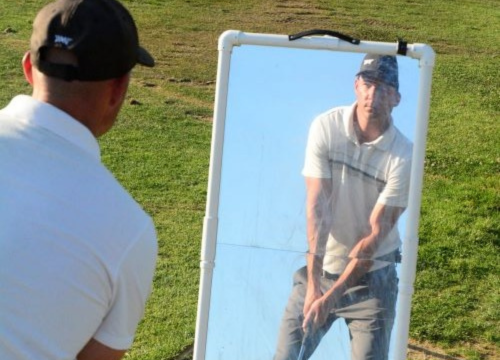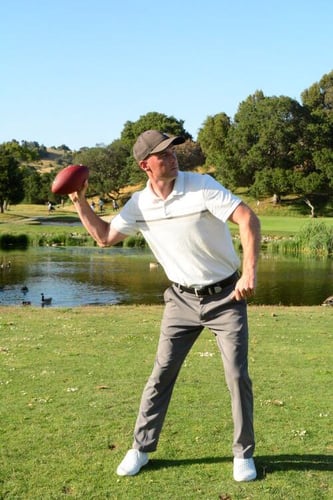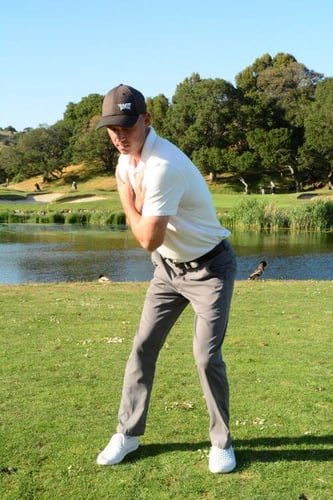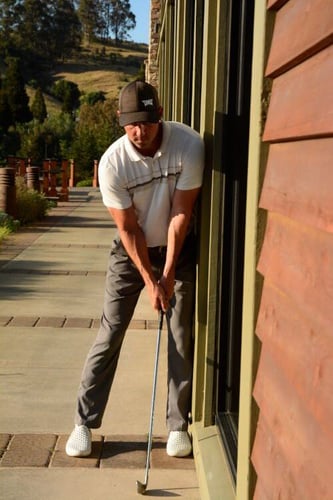
BY KELVIN KELLEY with Adam Schupak
First appeared in Summer 2021 Golf Magazine
I like my students to work on the parts of the swing we can control. For instance, a good golf swing starts with a good setup. It’s a static motion and the easiest part of your golf swing to work on. If you start correctly, it’s easier to find impact.The easier it is, the less moving parts, the more efficient it is. The further you set up away from impact the more you have to do to find it. Not saying it can’t be done, it’s just harder to accomplish and some of us don’t have the time to hit a thousand balls to perfect the necessary timing. I like to look at posture as the form of the body from the front view and down the line position at address. “Shape” in posture is the angles our body creates at address. This includes the relationship between the upper and lower half of our bodies. For an efficient posture that creates a simple, powerful, and repeatable swing, I like a player’s shape to be set into what I call their “hitting angles.” Hitting angles are similar to the impact position. Once we are set into these hitting angles, the goal of the backswing is to maintain these angles, coiling around the spine. When these angles are maintained in the backswing, the club can return to impact in a more dynamic form of our set-up position. This creates minimal effort that produces speed and repeatability—essentially doing more with less.
THE RIGHT-ARM THROW
The more I have studied the golf swing throughout my coaching career, the more I have realized its similarities to a throwing motion – but not just any throwing motion. The movements necessary to properly swing a golf club are remarkably similar to the way an elite, efficient NFL quarterback throws a football. In both sports, the target is in front of you and both motions should be trained to produce forward inertia, with the body moving toward the target. In the golf swing, the backswing is a coil, which should have a golfer’s body move the proper direction and amount. This allows golfers to swing down and through in the most efficient way possible: going toward the target.
THE DIRECTION OF TURN DRILL
1. A simple and effective way to simulate the motion is a drill that doesn’t even require a club. Take an athletic stance with arms criss-crossed so your left hand is on your right shoulder and right hand is on your left shoulder. From this start point, you can see the proper coil from the backswing to the follow through. What I call the “one-two turn” generates the same coil as if you’re trying to jump up on a table positioned to the left of you. Again, if we start correctly in our impact position and get the club head swinging back first, we can retain angles making impact much easier to find.
2. I also like to use an Impact Bag, or simply a bucket of range balls can be a good substitute, to work on this drill. Begin by getting in your golf posture and swing The Impact Bag around you (or basket). The goal is to keep it level the whole time. That will create the proper feel of left side out, right side back, and feeling your glutes going around. Note the structure of the trail arm, which is bent and tucked below the lead shoulder, creating angle in your trail wrist and a fixed impact position. This makes impact easier to find. From this position, you can use your right arm as a pushing motion through the ball.
THE WALL DRILL
A great drill to get the feeling of the proper coil is what I call the “off the wall, on the wall” drill. Start by setting up with your lead side against a wall (pictured). Make sure your trail shoulder is below the lead shoulder with a tucked trail arm. From this position, swing your arms to the top of your swing. When doing this drill properly, your upper body moves off the wall, and the lower body stays on the wall. An important note to make is the hips and glutes shouldn’t stay stagnant against the wall. They go around, sliding against the wall as the upper moves off. This drill helps get you into the proper hitting angles at address and in the backswing. The good news about working on your posture is that it is the easiest part to control in the swing. Posture is a static motion, so our body will respond to 100% of what our mind tells it to do. It’s talentless. Good posture gives us the best chance for solid contact and our desired ball flight. It should be practiced, maintained, and put us in a position to make the most effortless, efficient stroke possible.